History of American Wars
Americans have fought in many wars, within their own country as well as abroad. These wars were fought for a variety of reasons, ranging from the need to be independent from colonists to the expansion of national boundaries.
Here’s a list of some of the American wars that took place since the United States became an independent nation. Please note: this is not a full list of every war or conflict that American soldiers were a part of.
List of Major American Wars
(1775-1783)
The British Navigation acts, the closing of western lands, the restricting of the colonial currency, the Quartering Act, the Stamp Act, and The Townshend Acts enacted by the British Parliament contributed to the revolution of colonists. In 1773, the British Parliament permitted the East India Company to sell tea in the colonies at very low prices, which resulted in the Boston tea party. The response of the British Parliament was the Intolerable Acts and the Quebec Act in 1774. In September of the same year, the First Continental Congress was held in Philadelphia. The Revolutionary War began in 1775. The second Continental Congress was held in May, 1775 in Philadelphia. In 1776, the United States declared independence. British and American troops fought near Boston, New York, Trenton, and other places. In 1783, by the Treaty of Paris, the independence of the 13th colonies was recognized by Great Britain, and the war ended.

American Revolutionary War Statistics:
- Population: 3,500,000
- Service Members: 200,000
- Ratio: 5.7%
- Casualties: 4,435 Dead, 6,188 Wounded
- Financial Cost in billions (1990s): $1.2
Flags of the Era:
Don’t Tread On Me!
There are many renditions of this concept and don’t worry - we have them all. This slogan inspired a very famous political cartoon that was published in the Pennsylvania Journal in 1754, which featured a snake cut into pieces with the caption "Join or Die." This snake acted as a symbol of resistance at the time, and it was often used in political propaganda.
Don’t underestimate the American colonists and don't underestimate how great these flags will look on your house!
The Original Betsy Ross Flag
Perhaps one of the most iconic flags in American History, Betsy Ross knew what she was doing when she made this work of art. She was called upon by none other than George Washington himself, who was head of the continental army at the time. Along with some other members of the secret continental congress, he asked her to make something that could unite the people under a new ideal. And she delivered this masterpiece that set the US up on the path to harmony with each other and future freedom!
(1812-1815)
The United States declared war on Britain in 1812. The Americans’ attempts to conquer Canada during the campaigns of 1812-1813 failed. British blockaded the American coast. After many battles, the war was ended in 1814 by the Treaty of Ghent, which was the Belgium of old. Weeks after that, Major General Andrew Jackson, also known as “Old Hickory,” won the battle of New Orleans. The war ended with no gain for both sides.
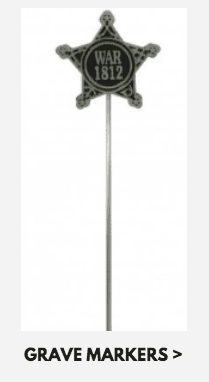
War of 1812 Statistics:
- Population: 7,600,000
- Service Members: 286,000
- Ratio: 3.8%
- Casualties: 2,260 Dead, 4,505 Wounded
- Financial Cost in billions (1990s): $0.7
Flags Of The Era:
Don’t Give Up This Ship!
In the War of 1812, there were many notable battles. Among the most notable was the Battle of Lake Erie, not too far from our headquarters in East Greenbush New York. In this battle, Captain James Lawrence uttered his final words that are famous today, “Don't give up this ship!” Today, his bravery is celebrated and commemorated in the Don't Give Up This Ship flag.
(1846-1848)
Mexico refused to recognize the annexation of Texas. In 1846, Mexicans attacked US troops, and the Congress declared war on Mexico. The Mexican-American War was ended by the Treaty of Guadalupe Hidalgo in 1848. Mexico ceded the states of California, Utah, Nevada, as well as parts of New Mexico, Colorado, Arizona, and Wyoming.
Mexican-American War Statistics:
- Population: 21,100,000
- Service Members: 78,718
- Ratio: 0.4%
- Casualties: 13,283 Dead, 4,152 Wounded
- Financial Cost in billions (1990s): $1.1
Flags Of The Era:
New US State Flags
After the Mexican American war, the US had a few extra states mentioned above! With all those states came new state flags for California, Utah, Nevada, New Mexico, Colorado, Arizona, and Wyoming. That’s a lot of state flags and territory to explore. And the best news is that they are all available here at Gettysburg Flag Works.
Mexico Flag
Additionally, Mexico has a tremendous flag that pulls from its long history to give us what it is today. It touches on its Aztec heritage and the snake along with the eagle has a religious background that is strong symbolism for the idea of good triumphing over evil!
(1861–1865)
The American Civil War was fought by 11 southern states known as the Confederacy and Union states. Since President Abraham Lincoln and the Republican Party were against the expansion of slavery, the southern states declared their secession from the Union. This war was the deadliest in American history. The Union won, the Confederate armies surrendered in 1865, and the war ended the practice of slavery.
American Civil War Statistics:
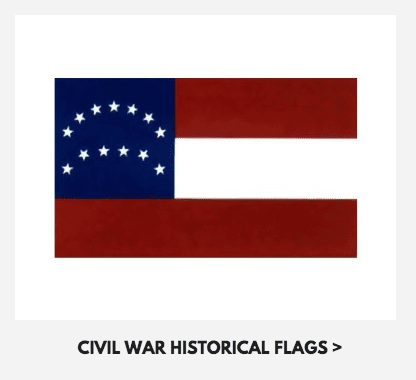
The Union
- Population: 26,200,000
- Service Members: 2,803,300
- Ratio: 10.7%
- Casualties: 360,000 Dead, 275,175 Wounded
- Financial Cost in billions (1990s): $27.3
The Confederate States of America
- Population: 8,100,000
- Service Members: 1,064,200
- Ratio: 13.1%
- Casualties: 260,000 Dead, 137,000+ Wounded
- Financial Cost in billions (1990s): $17.1
Total
- Population: 34,300,000
- Service Members: 3,867,500
- Ratio: 11.1%
- Casualties: 620,000 Dead, 412,175+ Wounded
- Financial Cost in billions (1990s): $44.4
Flags Of The Era:
34 Star Union Civil War Flag
During the Civil War, the US didn't have all 50 states that are present today. In fact they only had 34 states. That is why we specifically made the 34-star Union Civil Flag. The Union soldiers and leadership specifically left the southern states represented on the flag because they refused to let them secede from the union.
Bonnie Blue Flag
The Bonnie Blue Flag was another prominent flag at the time as it represented the Confederate States of America at the beginning of the war, before switching over to the confederate flag we know today. Its simple design is known to be the first lone-star flag made in America.
(1898)
Spain declared war on the US in April 1898 because the US supported the Cuban struggle for independence. The war ended with the signing of the Treaty of Paris in August, 1898. The US gained the Philippines, Puerto Rico, and Guam.
Spanish-American War Statistics:
- Population: 74,600,000
- Service Members: 306,800
- Ratio: 0.4%
- Casualties: 387 Dead, 1,662 Wounded
- Financial Cost in billions (1990s): $6.3
(1914-1918)
The First World War began in 1914, and it was fought between the Allied (Entente) Powers, which included the Russian Empire, the British Empire, France, the Empire of Japan, Italy, and the US, and the Central Powers, which included the Ottoman Empire, the German Empire, the Austrian-Hungarian Empire, and the Kingdom of Bulgaria. The war ended with the victory of the Allied Powers in 1918. New nations were formed.
World War I Statistics:
- Population: 102,800,000
- Service Members: 4,743,800
- Ratio: 4.6%
- Casualties: 116,708 Dead, 204,002 Wounded
- Financial Cost in billions (1990s): $196.5
Flags Of The Era:
WWI Commemorative Flag
We love honoring and remembering the hard fought battles and sacrifices made during the war. That is why we offer this WW! Commemorative Flag, as it was known at the time as the war to end all wars. It represents the First World War and sports the tag line,”Lest We Forget.”
(1939-1945)
The Second World War started in 1939 with the German invasion of Poland. It was fought between the Axis Powers, which consisted of Germany, Italy, and Japan, and the Allies, which were made up of the British Empire, the USSR, and the USA. The war ended with the capitulation of Germany and Japan in 1945. Warsaw Pact and NATO were created, and the Cold War began.
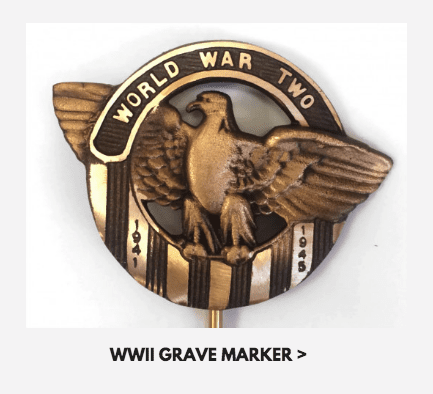
World War II Statistics:
- Population: 135,500,000
- Service Members: 16,353,700
- Ratio: 12.2%
- Casualties: 407,316 Dead, 670,846 Wounded
- Financial Cost in billions (1990s): $2,091.3
Flags Of The Era:
American 48 Star Flag
Just like in the first world war, Alaska and Hawaii hadn’t joined the US as states. Therefore we still love our 48 star flag to represent the time!
WWII Commemorative Flag
On top of the 48 star flag, we have a beautifully done commemorative flag that is made for the “Greatest Generation.” These brave men and women deserve this tribute for their sacrifice during this difficult time!
(1950-1953)
In 1950, North Korea invaded South Korea, and the nations that were allied with the US (the UN) intervened on behalf of the South. The USSR and the People’s Republic of China supported the North Korea. The Korean conflict ended in 1953. The Korean Demilitarized Zone was established.
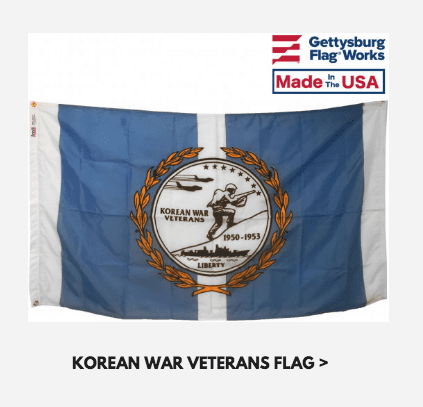
Korean War Statistics:
- Population: 151,700,000
- Service Members: 5,764,100
- Ratio: 3.8%
- Casualties: 33,651 Dead, 103,284 Wounded
- Financial Cost in billions (1990s): $263.9
Flags Of The Era:
Korean War Commemorative Flag
Those who fought in this war are represented by the Korean War Commemorative Flag. There aren’t any other American flags that are especially relevant to the era. Even though there aren’t a significant amount of flags to represent the war, we have a myriad of lapel pins, grave markers and beautiful medallions to offer!
(1959-1975)
The Vietnam War was fought between the communist forces of North Vietnam, Viet Kong, Khmer Rouge, the People’s Republic of China, USSR, North Korea, and Pathet Lao, and the anticommunist forces of US, South Vietnam, South Korea, Australia, Philippines, Thailand, New Zealand, the Kingdom of Laos and the Khmer Republic. North Vietnam won, and Laos, Cambodia, and South Vietnam became communist states.
Vietnam War Statistics:
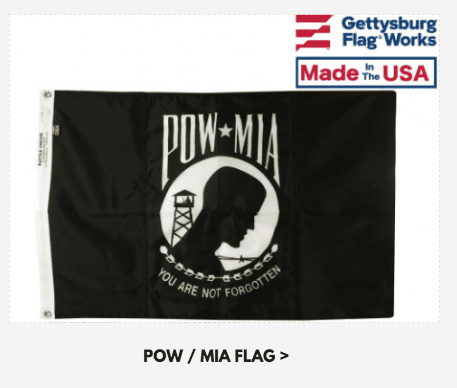
- Population: 204,900,000
- Service Members: 8,744,000
- Ratio: 4.3%
- Casualties: 58,168 Dead, 303,635 Wounded
- Financial Cost in billions (1990s): $346.7
Flags Of The Era:
The Vietnam War Veterans Commemorative Flag
The Vietnam War was controversial - what isn’t controversial is how well these flags represent this valiant group of soldiers who fought for America in one of the most difficult conflicts we have entered.
Our best Vietnam War flags display the colors of the Vietnam war. The red represents the three Vietnamese empires of Tonkin, Annam and Cochin China. The green demonstrates the dense jungles of Vietnam and terrain that the soldiers had to traverse throughout the war. Finally, the Yellow is showing the imperial color of Vietnam.
Gulf War (1990-1991)
The war was fought between Iraq and the coalition forces of 34 nations that were authorized by the UN, after the Iraqi invasion of Kuwait. The war ended with the coalition victory, and Kuwait was liberated.
Gulf War Statistics:
- Population: 260,000,000
- Service Members: 2,750,000
- Ratio: 1.1%
- Casualties: 382 Dead, 467 Wounded
- Financial Cost in billions (1990s): $61.1
(2001-2021)
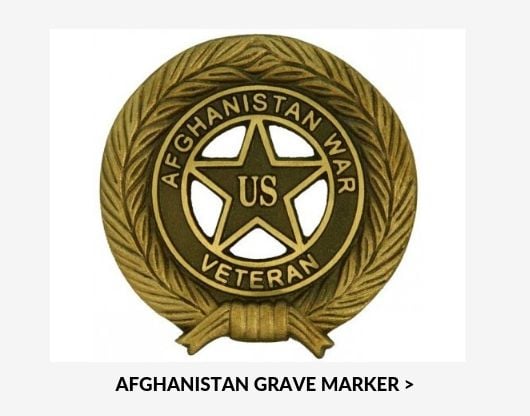
Beginning October 7, 2001, Operation Enduring Freedom is the U.S. led effort to drive al-Qaeda and Taliban forces from power in Afghanistan.
Afghanistan War Statistics (as of 9/2021)
- U.S. Troops: 980,000
- U.S. Casualties: 2,455 dead
- Financial Cost: $2 Trillion
Flags Of The Era:
War in Afghanistan Veteran Grave Marker
Modern wars don’t really get creative with flags. Instead, we have a wonderful tribute in the form of a grave marker for those who fell during the war fighting for our freedom.
(2003-2011)
Operation Iraqi Freedom (renamed Operation New Dawn in September 2010) began in 2003 with the invasion of Iraq by a U.S.-led coalition that overthrew the government of Saddam Hussein. The conflict continued for nearly a decade, as insurgent fighters resisted the occupying forces and the post-invasion Iraq government. In 2007, following a decline in insurgent violence, the U.S. gradually began to reduce its military presence, and the last U.S. troops exited on December 15, 2011, marking the end of the war.
Iraq War Statistics:
- Iraq Population: 25 Million (2003)
- U.S. Troops: 1 Million+
- U.S. Military Casualties: 4,488 Dead, 32,223 Wounded
- Financial Cost: $1.7 trillion (through Fiscal Year 2013)
Flags Of The Era:
Military, Armed Forces & POW/MIA Flags
Similar to the War in Afghanistan, the Iraq war doesn’t have commemorative flags or historical flags to represent it well. This is most likely due to how recent the war was. Instead please tribute those fallen with Iraq War grave markers and/or appropriate military, armed forces and POW/MIA flags.
More 21st Century Interventions (2000-Present)
Many wars have been waged on terror and the groups that make up terror groups. Some of these groups include but are not limited to al-Qaeda, Islamic State, ISIS, al-shabaab and various other groups. In these conflicts, the U.S.A. supported and fought to defend freedom to varying degrees. These conflicts are not large enough to be considered a full fledged war for the U.S., but still deserve recognition nonetheless.
The following interventions and operations are covered in this section:
- American Intervention in Yemen (2002-Present)
- American Intervention In The War In North-West Pakistan (2004-2018)
- Second U.S. Intervention in the Somali Civil War (2007–present)
- Operation Ocean Shield (2009-2016)
- International Intervention in Libya (2011) (2015–2019)
- Operation Observant Compass in Uganda (2011–2017)
- American-led Intervention in Syria (2014–present)
- American Military Intervention in Niger (2018–present)
Flags Of The Era:
Country Flags & Battle Tough American Flags
While we do not support terror groups, you can show your support for the countries that have been affected by all of these conflicts including the flags, stick flags and lapel pins for the countries of Yemen, Pakistan, Somalia, Libya, Uganda, Syria, and Niger! And as always, our beautiful Battle Tough American Flags fly with all of our allied countries as the U.S. works to defend pride, liberty and honor everywhere in the world.
American Intervention in Yemen (2002-Present)
This refers to the United States' involvement in Yemen's ongoing civil war, which began in 2002 as part of the larger War on Terror. The conflict in Yemen has its roots in political and economic grievances, including corruption, unemployment, and poverty, which led to protests and demands for political reform in 2011. This was followed by a power struggle between different factions, including the internationally recognized government and the Houthi rebel movement, which escalated into a full-blown civil war in 2014. The U.S. has provided military support to the Yemeni government as its broader counterterrorism efforts in the region.
Intervention in Yemen Statistics
- Population: Approximately 29.8 million (2021 estimate)
- US Troops Sent Over: Unknown (US military presence is limited, but has included drone strikes, training and advising Yemeni forces, and special operations forces)
US Military Casualties: At least 1 US service member killed in action (since 2017)
- Financial Cost to the US: Unknown
American Intervention In The War In North-West Pakistan (2004-2018):
The conflict in Pakistan's northwest region has its roots in the Soviet-Afghan War of the 1980s, when the U.S. and other countries provided support to Afghan militants fighting against Soviet forces. This led to the rise of extremist groups, including the Taliban and Al-Qaeda, which subsequently used Pakistan as a base of operations. The U.S. became involved in the conflict following the 9/11 attacks in 2001, as part of its efforts to combat terrorism and dismantle Al-Qaeda.
North-West Pakistan War Statistics:
- Population: Approximately 222.5 million (2021 estimate)
- US Troops Sent Over: Unknown (US military presence was primarily limited to drone strikes and occasional special operations missions)
- US Military Casualties: At least 4 US service members killed in action (2008-2010)
- Financial Cost to the US: Approximately $84 billion (estimated cost of all operations in Afghanistan and Pakistan, including this conflict)
Second U.S. Intervention in the Somali Civil War (2007–present):
The conflict in Somalia’s main conflict for almost 2 decades has its roots in the collapse of the Siad Barre regime in 1991, which led to a power vacuum and the emergence of multiple armed groups.
The U.S. became involved in the conflict as part of its broader counterterrorism efforts in the region, particularly in response to the threat posed by Al-Shabaab militants.The U.S. has conducted drone strikes and provided military support to the Somali government in its fight against Al-Shabaab militants.
In addition to the ongoing civil war, there has been a NATO-led operation to combat piracy off the coast of Somalia called Operation Ocean Shield (2009-2016).
Its main purpose was to provide naval patrols and escort missions to protect ships from pirate attacks. This was made mainstream by the feature film Captain Phillips which is based on a true merchant story of Somali pirates taking over a ship. The piracy off the coast of Somalia was largely driven by poverty and the absence of effective governance in the region. The U.S. and other countries launched Operation Ocean Shield to protect shipping lanes and prevent pirate attacks, which were causing significant economic damage.
Somali Civil War Statistics:
- Population: Approximately 15.9 million (2021 estimate)
- US Troops Sent Over: Approximately 500 (according to a 2021 report)
- US Military Casualties: At least 4 US service members killed in action (since 2017)
- Financial Cost to the US: Unknown
Operation Ocean Shield Statistics:
- Population: N/A (operation was focused on maritime piracy off the coast of Somalia)
- US Troops Sent Over: Unknown (US participation primarily involved naval forces)
- US Military Casualties: None
- Financial Cost to the US: Unknown
International Intervention in Libya (2011) (2015–2019):
The conflict in Libya was sparked by the Arab Spring protests in 2011, which led to the overthrow of longtime dictator Muammar Gaddafi. However, the country quickly descended into chaos, as various armed groups vied for power and control. The U.S. and other countries became involved in the conflict as part of efforts to protect civilians and stabilize the country.
Libyan Intervention Statistics:
- Population: Approximately 6.8 million (2011 estimate)
- US Troops Sent Over: Approximately 1,000 (according to a 2016 report)
- US Military Casualties: At least 4 US service members killed in action (2012)
- Financial Cost to the US: Approximately $1.1 billion (according to a 2017 report)
Operation Observant Compass in Uganda (2011–2017):
Uganda and neighboring countries have internal conflict due to a Militant group rising. Observant Compass was a U.S.-led operation to provide military support and training to African Union forces fighting against the Lord's Resistance Army (LRA) in Uganda, South Sudan, Central African Republic, and the Democratic Republic of Congo.
The Lord's Resistance Army is led by Joseph Kony, and is responsible for widespread atrocities, including child abduction and forced recruitment. The U.S. launched Operation Observant Compass to support regional forces in their efforts to capture and defend their citizens from Kony and other LRA forces.
Operation Observant Compass Statistics:
- Population: Approximately 47.7 million (2021 estimate)
- US Troops Sent Over: Approximately 100 (according to a 2017 report)
- US Military Casualties: None
- Financial Cost to the US: Unknown
American-led Intervention in Syria (2014–present):
This intervention refers to the U.S. military aid in the Syrian Civil War, which began in 2014. Although, The conflict in Syria began as a peaceful protest movement in 2011. The Protesters wanted political reform and an end to government corruption. However, the government's brutal crackdown on protesters, combined with sectarian tensions and the emergence of extremist groups, quickly escalated into a full-blown civil war. The U.S. became involved in the conflict as part of efforts to combat ISIS and other extremist groups.
Intervention in Syria Statistics:
- Population: Approximately 17.1 million (2021 estimate)
- US Troops Sent Over: Approximately 2,000 (according to a 2019 report)
- US Military Casualties: At least 11 US service members killed in action (since 2014)
- Financial Cost to the US: Approximately $28.2 billion (according to a 2019 report)
American Military Intervention in Niger (2018–present):
Niger has been caught in the takeover of their regional area by militant groups affiliated with Al-Qaeda and ISIS. The U.S. became involved in the conflict following a 2017 ambush that killed four U.S. soldiers, as part of efforts to support Nigerien forces in their fight against terrorism. The U.S. military's presence in Niger was meant to provide training and support to Nigerien forces in their fight against ISIS and other militant groups in the region and is ongoing as of January 2023.
Intervention in Niger Statistics:
- Population: Approximately 25.5 million (2021 estimate)
Yemen Intervention Statistics:
- Population: Approximately 29.8 million (2021 estimate)
- US Troops Sent Over: Unknown (US military presence is limited, but has included drone strikes, training and advising Yemeni forces, and special operations forces)
- US Military Casualties: At least 1 US service member killed in action (since 2017)
- Financial Cost to the US: Unknown
Remember American War History with Made-in-the-USA Flags
Throughout the history of American wars, the country suffered many casualties and great financial losses, but some of the wars did bring about positive circumstances that contributed to the prosperity of the nation. All of the wars helped to shape our country into the nation it is today.
At Gettysburg Flag Works, we're passionate about helping our customers show their pride for America's storied history. We carry a variety of to help them do just that! If you're looking for a historic flag, be sure to browse our selection.
We also stock a variety of that are perfect for honoring the sacrifices made by the service men and women who defended and helped to shape our country during the wars mentioned above.
With our American-made products, you can show your pride for the USA while celebrating the history that got us here. Can't find what you're looking for? Give us a call at 1-888-697-3524 or contact us online and we'd be happy to point you in the right direction.